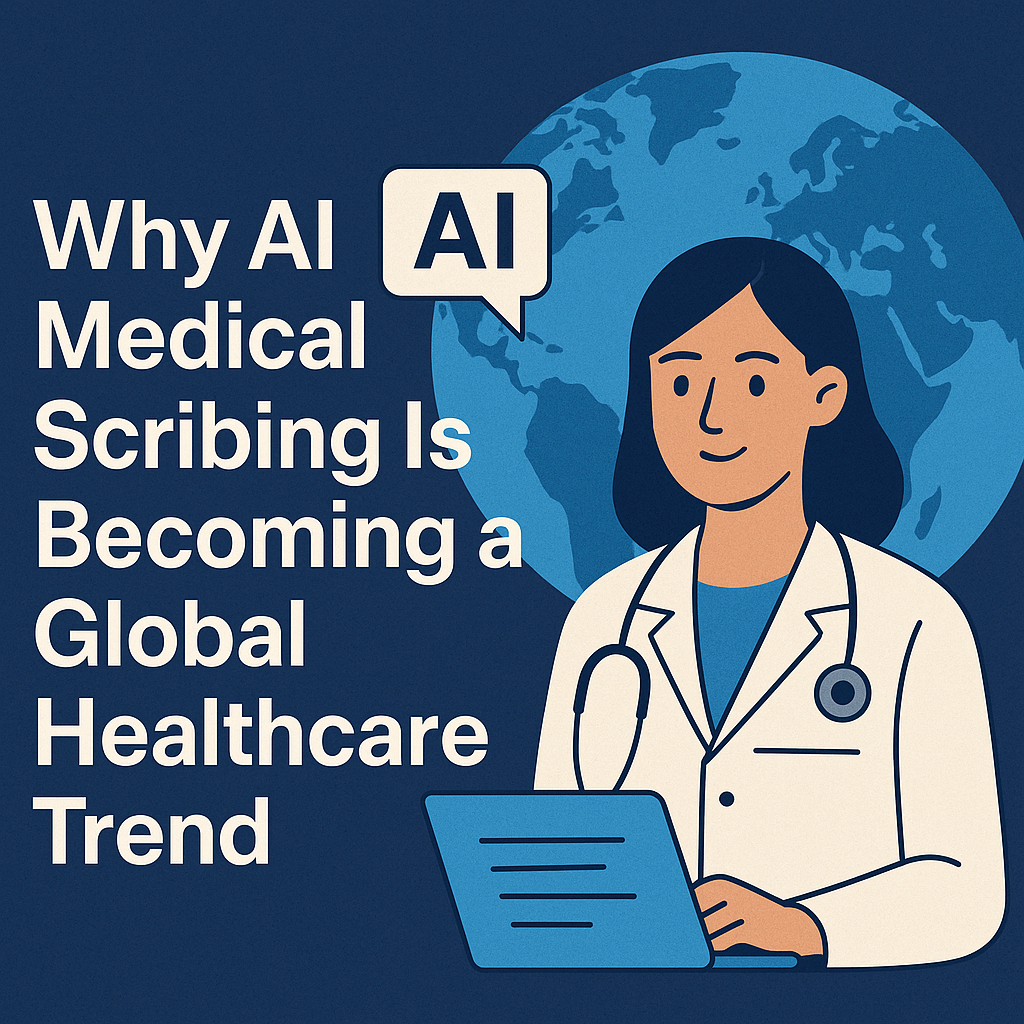In the saturated world of AI buzzwords, everyone’s promising a revolution. But if you want real impact—today, not five years from now—stop chasing hype.
The most valuable, high-impact use of AI in healthcare right now isn’t predictive analytics, robotic surgery, or generative chatbots.
It’s AI-powered clinical documentation.
In other words: AI scribing.
Here’s why AI scribing isn’t just another flashy use case—it’s foundational. It’s fixing the pain points that actually drive burnout, turnover, and revenue leakage.
1. Retention and Turnover: Solving the $100K Problem
Healthcare organizations spend $60K–$250K per lost clinician on recruiting, onboarding, and productivity loss. Most exits trace back to one thing: documentation overload.
AI scribing has become a retention strategy, not just a workflow hack.
Impact:
- Clinicians are more likely to stay when documentation feels manageable
- AI scribe support is now an expectation, not a perk—especially for younger providers
- Better documentation experience = higher team morale and fewer resignations
KPI Boost: Increased retention rate, lower churn, reduced onboarding costs
2. Clinician Burnout and Job Satisfaction: The Moral (and Financial) ROI
Across specialties, documentation is the #1 driver of burnout. AI scribing lifts that burden, improving both quality of life and clinical engagement.
Impact:
- Clinics report 2x increases in clinician-reported job satisfaction after implementing scribing tools
- Providers feel more present with patients, instead of glued to a laptop
- Better work-life balance = higher team engagement and clinical quality
KPI Boost: Lower burnout scores, higher HCAHPS and quality-of-care metrics
3. Documentation Signed Off During Business Hours: From <80% to >95%
Most clinicians finish charts after hours—hurting quality and morale. AI scribing flips the equation.
In one multi-specialty clinic, the % of notes signed off during business hours jumped from under 80% to over 95% after introducing AI scribing.
Impact:
- Clinicians leave work on time—and mentally offload documentation
- Fewer late-night logins, reduced “pajama time”
- Team-wide job satisfaction increases due to clearer boundaries and recovery time
KPI Boost: Higher documentation completion rate during work hours = happier staff and faster billing
4. Time to Sign Off: From 24+ Hours to <2
“Time to sign off” isn’t just a scheduling metric—it directly impacts revenue and note accuracy. If you wait until the next day, you’re guessing.
One ambulatory group reduced average sign-off time from >24 hours to under 2 hours with AI scribing.
Impact:
- Improved documentation accuracy—no more backdating or memory loss
- Faster billing cycles from earlier documentation availability
- Cleaner data for population health, referrals, and care coordination
KPI Boost: Faster time to sign = faster claims, fewer denials, and improved record accuracy
5. Business Hours Reclaimed: 2–4+ Hours Saved Daily
Without AI, clinicians often function as part-time typists. AI scribing gives that time back—2 to 4 hours per day, on average.
Impact:
- More patient-facing time without extending clinic hours
- Decreased need for overtime
- Time freed up for mentorship, admin, or simply catching your breath
KPI Boost: Higher clinic efficiency, better throughput, and less overtime burn
6. Revenue Uplift: Not Just Cost Saving—Growth
AI scribing doesn’t just save time—it directly drives revenue.
Impact:
- More patients seen per day without increasing hours
- Decrease in claim denials due to incomplete notes
- Faster documentation = faster claim submission = shorter days in A/R
KPI Boosts:
- Higher revenue per clinician
- Decreased missed charges
- Faster revenue cycle timelines
7. Compliance and Audit Readiness: Built-In Defense
AI scribes help enforce consistency in documentation—using templates, capturing key phrases, and ensuring regulatory standards are met.
Impact:
- More defensible documentation during audits
- Consistent terminology and structure
- Lower audit risk, better billing outcomes
KPI Boost: Increased audit pass rates, reduced clawbacks, greater confidence in compliance
8. Everything Else Is Just Noise
Predictive tools, chatbots, and surgical robots may one day change healthcare. But today, AI scribing is solving the problem that clinicians face 100 times a day.
This isn’t innovation for innovation’s sake. It’s about fixing the bottlenecks that are breaking healthcare.
If you’re not investing in AI scribing, you’re wasting resources on tools your staff won’t use—because they’re too busy charting.
Final Thoughts
AI scribing is the single most impactful, scalable application of AI in healthcare today. It improves documentation speed, quality, and accuracy—while protecting your workforce and strengthening your bottom line.
Before you invest in another AI tool, ask:
Is it solving a problem that happens 100 times a day per clinician?
Because AI scribing is.
Curious what this looks like in action?
Schedule a demo with Comprehend—and start seeing results in days, not months.




